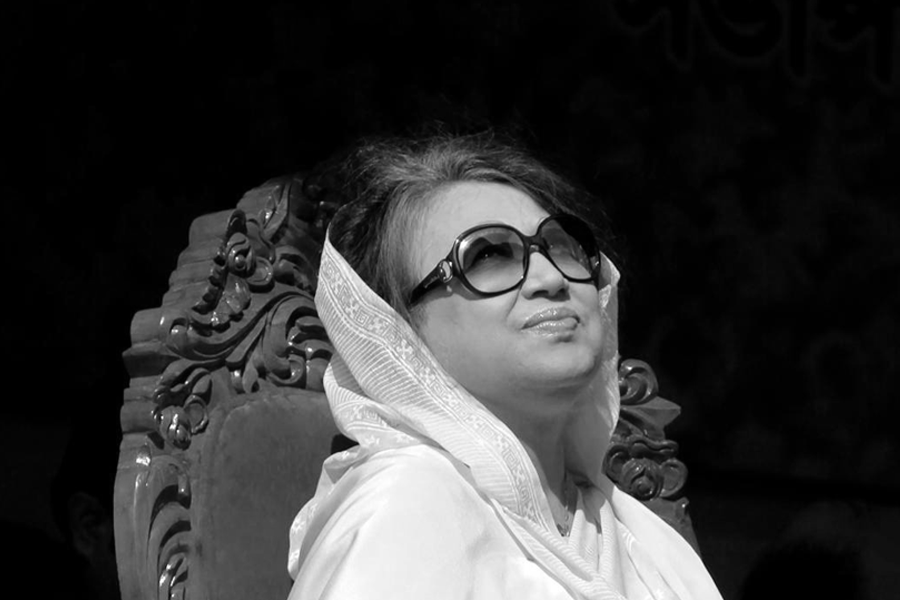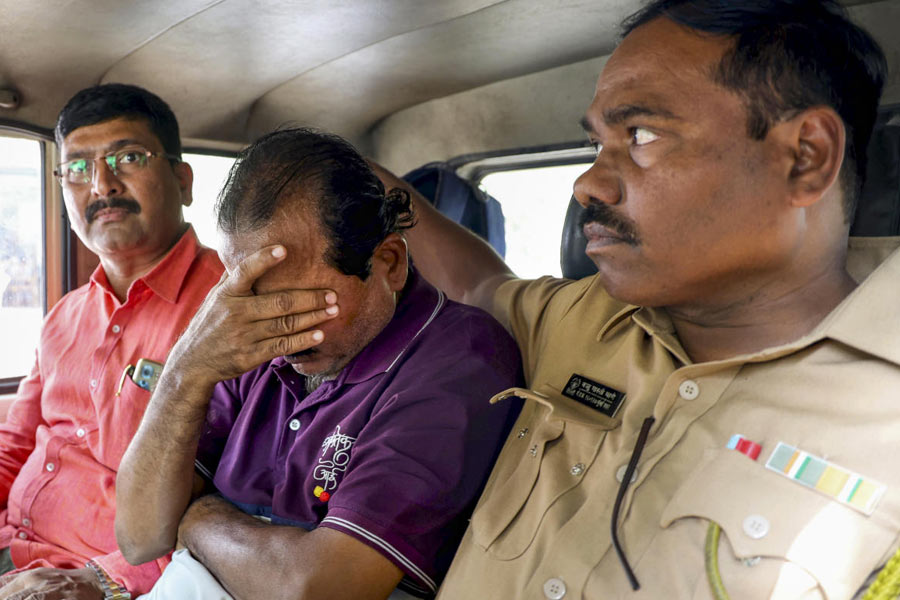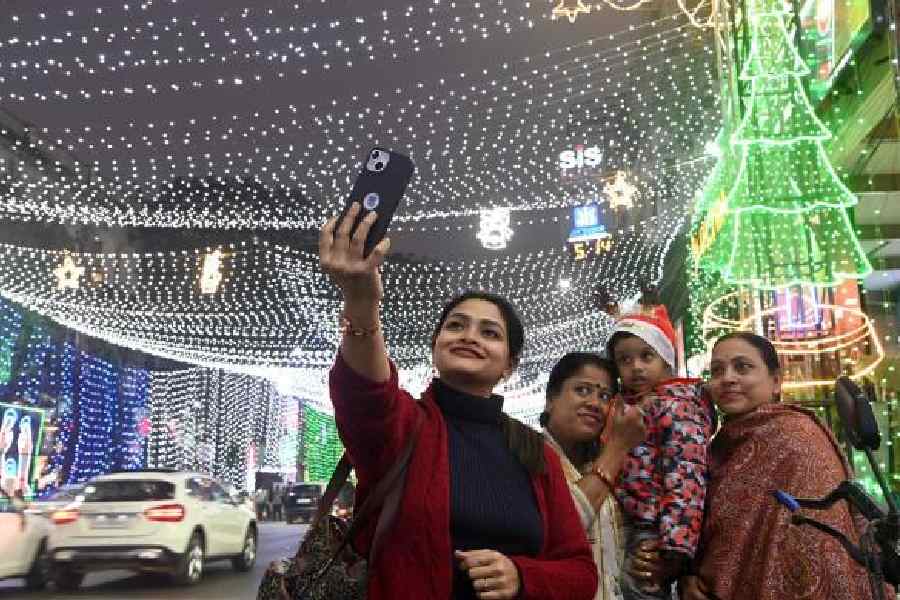A fantastical 19th century tale with its roots in folklore set in and shot in Bengal, Bulbbul — that streams on Netflix from June 24 — explores the concept of the she-demon or ‘chudail’ and humanises it, even as it makes a comment on the social status of women then and now.
Beautifully shot, Bulbbul is directed by first-time filmmaker Anvita Dutt and produced by Anushka Sharma’s Clean Slate Films. Tripti Dimri plays the title role, with Rahul Bose, Avinash Tiwary, Parambrata Chattopadhyay and Paoli Dam co-starring.
We caught up with Anvita, Parambrata and Paoli over a Zoom call to chat about the Bulbbul experience and what makes its themes and social commentary pertinent even today.
Param and Paoli, what were your primary reasons to sign on Bulbbul?
Parambrata Chattopadhyay: My primary motivation was this beautiful lady — Anvita Dutt — sitting in front of me. I have great respect for her and I know her since Pari (Param’s 2018 film, co-starring Anushka Sharma), for which she wrote the dialogues. She had shared this idea of Bulbbul, this existence called Bulbbul about two-and-a-half years ago, and since then, I have been fascinated by it. So when she eventually got down to making the film and called me for it, I didn’t even ask her what I was going to be doing in it. The added incentive was Clean Slate (Films) because I had done Pari with them. I have developed a special relationship with them… they are great friends, especially Karnesh (Ssharma).
All of this, of course, came from the fact that I knew what Bulbbul is all about. I was so impressed and intrigued by the space of the film… Anvita has spun a folkore into something so beautiful…. It’s a period drama but it’s still so relevant. It says a lot when one is able to comment on contemporary society through folklore that is more than 200 years old. It’s a very unique space, it hasn’t been tried in Indian cinema before, I believe. It’s a very fresh take, a very (Guillermo) del Toro-like take on a fable.
Anvita Dutt: I actually had to ask him, ‘Don’t you want to know what role you are playing?’ He said, ‘I don’t want to know, I don’t need to know. I can even play a chair! (Laughs) I am doing Bulbbul’. It was one of the most beautiful moments for me.
Paoli Dam: I’ve grown up hearing these stories from my grandmother, like Thakurmar Jhuli. As a kid, I was always fascinated by fairy tales and folklore. Stories about princes and princesses and demons…. So when I got an opportunity to do a film that was based on folklore, was set in the late 19th century and was a story that belonged to Bengal, I somehow connected with it and my character (Binodini). What’s interesting is that it also talks about social norms, the victimisation of women then and now….
I was also intrigued by the name Binodini. It’s one of my favourite characters written by Rabindranath Tagore. I know Param is bored of me saying this! (Laughs)
Param: Araisho baar shunlam ei kotha ta! (Laughs)
Paoli: Honestly, I didn’t know how to approach Binodini. I think I was the last person to be signed on for the film, so I didn’t get an opportunity to really interact with Anvita beforehand. But when I met her for the first time on set, the one thing she told me is that, ‘Binodini is a child’, and that I should attempt playing her like a child. She’s been poisoned by a lot of regressive ideas. She perpetuates a lot of these things but she’s also a victim herself. That completely changed my perspective of the character. This is the first time I play a victim. Till then, whatever characters I had played had been strong and independent women. Binodini locks up all her desires and emotions... she has beautiful saris and jewellery but she uses them as a camouflage to hide her true emotions and her pain. She doesn’t have anything else... she seeks love, she seeks care but she doesn’t have it. She’s the most tragic character in the film.
Anvita, what was the genesis of this story?
Anvita: I had no preconceived idea on what I wanted to write… there was no agenda. One night, at about 3.30am, I woke up from deep sleep and the idea of Bulbbul was waiting for me… that moment of her pulling her feet into her sari in fear… that image just flashed before my eyes, and which you will also get to see in the film. I woke up and I was like, ‘What was that? Who is she?’ I sat down to write that morning and I wrote two pages and there’s a lot of what I wrote that morning that’s made its way into the film.
I wish I knew where stories came from because then I would keep that window open all the time. That night, Bulbbul walked in. The fact that it was the story of a girl, her journey, her pain and her growth, her self-actualisation and that it was a fantastical tale… it all happened organically, I didn’t plan any of it. The first two pages built the story around the myth of the chudail and what she stands for. But I loved what was in those two pages so much that I was almost frightened to write any further.
I was in advertising for many years and then I was a commissioned writer in the film industry… I wrote dialogues and lyrics but I always realised someone else’s vision…. I had never written for myself. I didn’t know if I was capable enough to write Bulbbul. But then a few friends read the two pages and I got scolded... the choicest abuses were used when they realised that I was actually trying to avoid writing Bulbbul (laughs).
I go to Calcutta once a year to buy saris (laughs). Bengal feeds me... I feel very nourished when I am there. I had gone for one of my annual visits and when I came back, I saw that a bulbul had made a nest on the champa tree in my house. I was like, ‘Now, this is a sign’.
I wrote the script and then realised that it’s in my blood and I couldn’t give it to anyone else to direct. That was the first time in my life where the thought of becoming a director came into my head. I was like, ‘I will tell this story, I will find a way’.
Why did you set it in period Bengal?
Anvita: Because that first image of the feet that I had at 3.30 in the morning had alta on them. It’s a fairy tale, it could have been set anywhere. It could be set on another planet, underwater or in a soap bubble, but the story would be the same. Because it’s a fairy tale, I wanted to set it in a world like that, and for me, the neoclassical era of Bengal had a fairy tale-like quality... the architecture, the art and the aesthetics of that time, the costumes, the detailing, the crockery... the neoclassical period was beautiful in Bengal. The setting became like a piece of jewellery to my story.
Also, the way Tagore writes his women... delicate, fragile, such beautiful portrayals of women who are helpless... the women in the thakurbaris whose roles are so strongly defined that they find it difficult to step out of those boundaries. That really spoke to me.
Param, what was your understanding of your character Sudip?
Param: Sudip represents all that we know Bengal for, nationally speaking. People talk of Bengalis being liberal and progressive because Bengalis have had the cultural lineage of the Renaissance in the 19th century. That’s when the film is set. So while the Renaissance happens in the city and old ideas like child marriage and the ill-treatment of widows are being rejected, in this village, just a few hours away from the city, there’s a very contrasting picture. This family living in the haveli still propagates these archaic ideas.
Into this zone comes Sudip who is very plainly dressed, nothing as fancy as what Paoli or Rahul or Tripti or Avinash got to wear... he only wears grey, comes in. He’s a doctor who is a flagbearer of that Renaissance... a wise, emancipated man. He has his feet on the ground. He knows that when you have so many regressive ideas up against you, you can’t bring it down overnight. What intrigued me the most about Sudip was that despite being a man of science, he doesn’t hoot out the supernatural. He acknowledges the fact that there can be one domain which is probably beyond science. He has his eyes, ears and mind open. He’s a realist.
The characters that I have played so far in Hindi cinema have been a little unsure, perhaps. Like in Pari, Arnab is a sort of sociopath, he’s a recluse. But Sudip is very sure of himself, he’s extremely confident, he’s very articulate about conveying his views. He doesn’t get up and do a namaste to the zamindar... he just gets up and leaves.
It’s beautifully shot and mounted...
Anvita: It’s written like that... I had described every frame in detail. And when my DoP (director of photography) Siddharth Diwan, production designer Meenal (Agarwal) and costume designer Veera Kapur came on board, as well as the others later, my brief to them was that I wanted the film to look like a freshly painted Raja Ravi Varma painting. My idea was that if someone were to touch the screen, their fingers should be smeared with colour. I also love the way Caravaggio’s paintings are lit. I had these really strange kind of briefs! (Laughs) Instead of giving film references, I gave art references. I think we’ve managed to achieve what we wanted.
Paoli and Param, what was it like shooting on home ground?
Param: It was very special. It was convenient, first of all (smiles). Also, Bawali Rajbari, where we shot, is a beautifully restructured and redone-up property. I have a thing for old houses and in my little way, I try to champion the cause of preservation and conservation of heritage property. It was encouraging to see that the place, though refurbished, hasn’t sacrificed its inherent aesthetics. It’s not a swanky resort... they’ve kept its old parts. So they have made it habitable while keeping its dereliction intact.
Paoli: For me, it was a great experience. I hadn’t shot at Bawali Rajbari before. It’s beautiful and they converted it very nicely for the shoot. We stayed there while shooting and it was lovely.
The film is described through the keywords of ‘mystery’, intrigue’, ‘self discovery’, ‘justice’ and is a succinct commentary on women then and now, told through a fantastical tale. Anvita, at any point, did you feel you were cramming in too much, or were all these elements inherently a part of your story?
Anvita: They were all there, right from the beginning. I just wanted to write this story. Like everyone else who has lived a certain number of years, there are things that move me and bother me. They crept into the story organically... I was telling a tale and spinning a yarn but the things that move me will come in invariably. It took me so many years to make that decision of just being me and not what people expect me to be. That coming-of-age took a long time, we are conditioned by society to think that we have to please people. I want people to see this story and see that someone doesn’t really have to wait that long.... So it never felt like a task or I felt that I had to achieve all of these things... it was just a story, it was so simple.
The issues of contemporary times pulsate through the film. These are the things that I face and see and I am appalled by. And these are the things I am saying under the guise of a fairy tale.
Are you apprehensive that some people may tune in thinking it’s purely a horror film?
Anvita: From Day One, and now also with the trailer, we’ve been saying that it’s a fairy tale. Initially, there was a buzz that this could be horror, especially with the image of the feet turned back in the poster, but this is a film that focuses more on everyday horror than jump-scare horror. The chudail is a symbol of the ‘otherness’ that frightens us. What we don’t understand frightens us and it’s usually a demon of our own creation. From the trailer, I hope that people get the idea that it’s more fantastical than horror.
Param: It’s up to people, what they want to take away from it. We all have our respective takeaways from a film. If someone is in for horror, they will get a proper dose of it. If someone wants beautifully crafted frames, they will get it. I think it’s well-balanced that way.
Paoli: We aren’t saying it’s a horror film. It’s a supernatural thriller. It’s a period piece, there is an intense love story in the middle of it. There are elements of friendship, love, longing... It’s an entertaining film.










